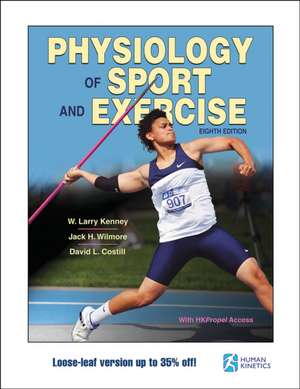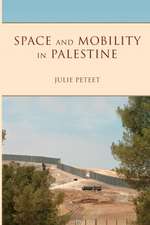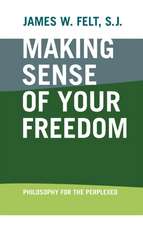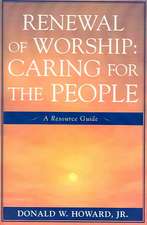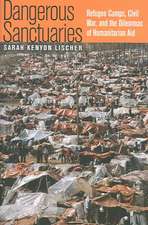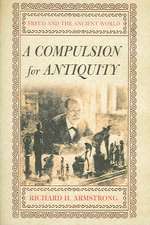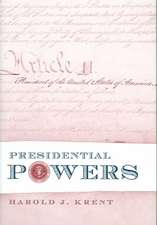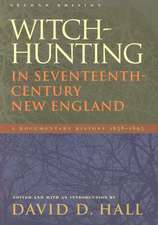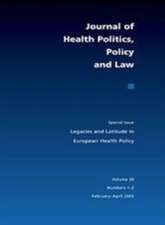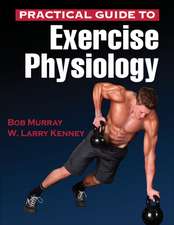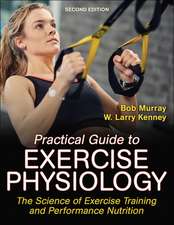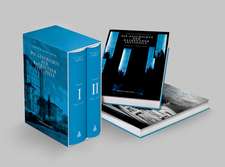Physiology of Sport and Exercise
Autor W. Larry Kenney, Jack H. Wilmore, David L. Costillen Limba Engleză Foi volante – 25 oct 2021
| Toate formatele și edițiile | Preț | Express |
|---|---|---|
| Paperback (1) | 885.59 lei 3-5 săpt. | +67.16 lei 5-11 zile |
| HUMAN KINETICS – 26 noi 2024 | 885.59 lei 3-5 săpt. | +67.16 lei 5-11 zile |
| Hardback (1) | 868.99 lei 3-5 săpt. | +74.63 lei 5-11 zile |
| MG – Human Kinetics – 25 oct 2021 | 868.99 lei 3-5 săpt. | +74.63 lei 5-11 zile |
| Foi volante (1) | 574.23 lei 3-5 săpt. | +65.41 lei 5-11 zile |
| MG – Human Kinetics – 25 oct 2021 | 574.23 lei 3-5 săpt. | +65.41 lei 5-11 zile |
Preț: 574.23 lei
Preț vechi: 745.76 lei
-23% Nou
Puncte Express: 861
Preț estimativ în valută:
109.89€ • 114.31$ • 90.72£
109.89€ • 114.31$ • 90.72£
Carte disponibilă
Livrare economică 24 martie-07 aprilie
Livrare express 08-14 martie pentru 75.40 lei
Preluare comenzi: 021 569.72.76
Specificații
ISBN-13: 9781718202702
ISBN-10: 1718202709
Pagini: 672
Dimensiuni: 214 x 279 x 30 mm
Greutate: 1.81 kg
Ediția:Eighth Edition
Editura: MG – Human Kinetics
ISBN-10: 1718202709
Pagini: 672
Dimensiuni: 214 x 279 x 30 mm
Greutate: 1.81 kg
Ediția:Eighth Edition
Editura: MG – Human Kinetics
Notă biografică
W. Larry Kenney, PhD, is the Marie Underhill Noll Chair in Human Performance and a professor of physiology and kinesiology at Pennsylvania State University at University Park. He received his PhD in physiology from Penn State in 1983. Working at Noll Laboratory, Kenney is researching the effects of aging and disease states such as hypertension on the control of blood flow to human skin and has been continuously funded by NIH since 1983. He also studies the effects of heat, cold, and dehydration on various aspects of health, exercise, and athletic performance as well as the biophysics of heat exchange between humans and the environment. He is the author of more than 200 papers, books, book chapters, and other publications.
Kenney was president of the American College of Sports Medicine (ACSM) from 2003 to 2004. He is a fellow of the ACSM and is active in the American Physiological Society.
For his service to the university and his field, Kenney was awarded Penn State University¿s Faculty Scholar Medal, the Evan G. and Helen G. Pattishall Outstanding Research Achievement Award, and the Pauline Schmitt Russell Distinguished Research Career Award. He was awarded ACSM¿s New Investigator Award in 1987 and their Citation Award in 2008.
Kenney has been a member of the editorial and advisory boards for several journals, including Medicine and Science in Sports and Exercise, Current Sports Medicine Reports (inaugural board member), Exercise and Sport Sciences Reviews, Journal of Applied Physiology, Human Performance, Fitness Management, and ACSM¿s Health & Fitness Journal (inaugural board member). He is also an active grant reviewer for the National Institutes of Health and many other organizations. He and his wife, Patti, have three children, all of whom were Division I college athletes.
Jack H. Wilmore, PhD, retired in 2003 from Texas A&M University as a distinguished professor in the department of health and kinesiology. From 1985 to 1997, Wilmore was chair of the department of kinesiology and health education and the Margie Gurley Seay Centennial Professor at the University of Texas at Austin. Before that, he served on the faculties at the University of Arizona, the University of California, and Ithaca College. Wilmore earned his PhD in physical education from the University of Oregon in 1966.
Wilmore published 53 chapters, more than 320 peer-reviewed research papers, and 15 books on exercise physiology. He was one of five principal investigators for the HERITAGE Family Study, a large multicenter clinical trial investigating the possible genetic basis for the variability in the responses of physiological measures and risk factors for cardiovascular disease and type 2 diabetes to endurance exercise training. Wilmore¿s research interests included determining the role of exercise in the prevention and control of both obesity and coronary heart disease, determining the mechanisms accounting for alterations in physiological function with training and detraining, and factors limiting the performance of elite athletes.
A former president of the American College of Sports Medicine (ACSM), Wilmore received ACSM¿s Honor Award in 2006. In addition to serving as chair for many ACSM organizational committees, Wilmore was on the United States Olympic Committee¿s Sports Medicine Council and chaired their Research Committee. He was a member of the American Physiological Society and a fellow and former president of the American Academy of Kinesiology and Physical Education. Wilmore consulted for several professional sport teams, the California Highway Patrol, the President¿s Council on Physical Fitness and Sports, NASA, and the U.S. Air Force. He also served on editorial boards of several journals.
Wilmore passed away during the preparation of the sixth edition of this text.
David L. Costill, PhD, is the Emeritus John and Janice Fisher Chair in Exercise Science at Ball State University in Muncie, Indiana. He established the Ball State University Human Performance Laboratory in 1966 and served as its director for more than 32 years.
Costill has written and coauthored more than 430 publications over the course of his career, including six books and articles in both peer-reviewed and lay publications. He was the original editor in chief of the International Journal of Sports Medicine for 12 years. Between 1971 and 1998, he averaged 25 U.S. and international lecture trips each year. He was president of the American College of Sports Medicine (ACSM) from 1976 to 1977, a member of its board of trustees for 12 years, and a recipient of ACSM¿s Citation Award and Honor Award. He has received numerous other honors, including an honorary doctoral degree from the Stockholm School of Physical Education, the Professional Achievement Award from Ohio State University, the President¿s Medal of Distinction at Ball State University, and the Distinguished Alumni Award from Cuyahoga Falls Public Schools. Many of his former students are now leaders in the fields of exercise physiology, medicine, and science.
Costill received his PhD in physical education and physiology from Ohio State University in 1965. He and his wife of 58 years, Judy, have two daughters. Now retired, Dr. Costill is a private pilot, auto and experimental airplane builder, competitive masters swimmer, and former marathon runner.
Kenney was president of the American College of Sports Medicine (ACSM) from 2003 to 2004. He is a fellow of the ACSM and is active in the American Physiological Society.
For his service to the university and his field, Kenney was awarded Penn State University¿s Faculty Scholar Medal, the Evan G. and Helen G. Pattishall Outstanding Research Achievement Award, and the Pauline Schmitt Russell Distinguished Research Career Award. He was awarded ACSM¿s New Investigator Award in 1987 and their Citation Award in 2008.
Kenney has been a member of the editorial and advisory boards for several journals, including Medicine and Science in Sports and Exercise, Current Sports Medicine Reports (inaugural board member), Exercise and Sport Sciences Reviews, Journal of Applied Physiology, Human Performance, Fitness Management, and ACSM¿s Health & Fitness Journal (inaugural board member). He is also an active grant reviewer for the National Institutes of Health and many other organizations. He and his wife, Patti, have three children, all of whom were Division I college athletes.
Jack H. Wilmore, PhD, retired in 2003 from Texas A&M University as a distinguished professor in the department of health and kinesiology. From 1985 to 1997, Wilmore was chair of the department of kinesiology and health education and the Margie Gurley Seay Centennial Professor at the University of Texas at Austin. Before that, he served on the faculties at the University of Arizona, the University of California, and Ithaca College. Wilmore earned his PhD in physical education from the University of Oregon in 1966.
Wilmore published 53 chapters, more than 320 peer-reviewed research papers, and 15 books on exercise physiology. He was one of five principal investigators for the HERITAGE Family Study, a large multicenter clinical trial investigating the possible genetic basis for the variability in the responses of physiological measures and risk factors for cardiovascular disease and type 2 diabetes to endurance exercise training. Wilmore¿s research interests included determining the role of exercise in the prevention and control of both obesity and coronary heart disease, determining the mechanisms accounting for alterations in physiological function with training and detraining, and factors limiting the performance of elite athletes.
A former president of the American College of Sports Medicine (ACSM), Wilmore received ACSM¿s Honor Award in 2006. In addition to serving as chair for many ACSM organizational committees, Wilmore was on the United States Olympic Committee¿s Sports Medicine Council and chaired their Research Committee. He was a member of the American Physiological Society and a fellow and former president of the American Academy of Kinesiology and Physical Education. Wilmore consulted for several professional sport teams, the California Highway Patrol, the President¿s Council on Physical Fitness and Sports, NASA, and the U.S. Air Force. He also served on editorial boards of several journals.
Wilmore passed away during the preparation of the sixth edition of this text.
David L. Costill, PhD, is the Emeritus John and Janice Fisher Chair in Exercise Science at Ball State University in Muncie, Indiana. He established the Ball State University Human Performance Laboratory in 1966 and served as its director for more than 32 years.
Costill has written and coauthored more than 430 publications over the course of his career, including six books and articles in both peer-reviewed and lay publications. He was the original editor in chief of the International Journal of Sports Medicine for 12 years. Between 1971 and 1998, he averaged 25 U.S. and international lecture trips each year. He was president of the American College of Sports Medicine (ACSM) from 1976 to 1977, a member of its board of trustees for 12 years, and a recipient of ACSM¿s Citation Award and Honor Award. He has received numerous other honors, including an honorary doctoral degree from the Stockholm School of Physical Education, the Professional Achievement Award from Ohio State University, the President¿s Medal of Distinction at Ball State University, and the Distinguished Alumni Award from Cuyahoga Falls Public Schools. Many of his former students are now leaders in the fields of exercise physiology, medicine, and science.
Costill received his PhD in physical education and physiology from Ohio State University in 1965. He and his wife of 58 years, Judy, have two daughters. Now retired, Dr. Costill is a private pilot, auto and experimental airplane builder, competitive masters swimmer, and former marathon runner.
Cuprins
Research Perspectives Finder
Introduction. An Introduction to Exercise and Sport Physiology
Focus of Exercise and Sport Physiology
Acute and Chronic Responses to Exercise
The Evolution of Exercise Physiology
Exercise Physiology in the 21st Century
Research: Turning Curiosity Into Science
Part I. Exercising Muscle
Chapter 1. Structure and Function of Exercising Muscle
Anatomy of Skeletal Muscle
Muscle Fiber Contraction
Muscle Fiber Types
Skeletal Muscle and Exercise
Chapter 2. Fuel for Exercise: Bioenergetics and Muscle Metabolism
Energy Substrates
Controlling the Rate of Energy Production
Storing Energy: High-Energy Phosphates
The Basic Energy Systems
Interaction of the Energy Systems
The Crossover Concept
The Oxidative Capacity of Muscle
Chapter 3. Neural Control of Exercising Muscle
Structure and Function of the Nervous System
Central Nervous System
Peripheral Nervous System
Sensory-Motor Integration
Chapter 4. Hormonal Control During Exercise
The Endocrine System
Endocrine Glands and Their Hormones: An Overview
Hormonal Regulation of Metabolism During Exercise
Hormonal Regulation of Fluid and Electrolytes During Exercise
Hormonal Regulation of Caloric Intake
Part II. Muscle Energy
Chapter 5. Energy Expenditure
Measuring Energy Expenditure
Estimating Energy Expenditure
Predicting Energy Expenditure
Energy Expenditure at Rest and During Exercise
Chapter 6. Fatigue, Muscle Soreness, and Muscle Cramps
Fatigue and Its Causes
Critical Power: The Link Between Energy Expenditure and Fatigue
Muscle Soreness
Exercise-Induced Muscle Cramps
Part III. Cardiovascular and Respiratory Function
Chapter 7. The Cardiovascular System and Its Control
The Heart
Vascular System
Blood
Chapter 8. The Respiratory System and Its Regulation
Pulmonary Ventilation
Pulmonary Volumes
Pulmonary Diffusion
Transport of Oxygen and Carbon Dioxide in the Blood
Gas Exchange at the Muscles
Regulation of Pulmonary Ventilation
Afferent Feedback From Exercising Limbs
Exercise Training and Respiratory Function
Chapter 9. Cardiorespiratory Responses to Acute Exercise
Cardiovascular Responses to Acute Exercise
Respiratory Responses to Acute Exercise
Recovery From Acute Exercise
Part IV. Exercise Training
Chapter 10. Principles of Exercise Training
Terminology
General Principles of Training
Resistance Training Programs
Anaerobic and Aerobic Power Training Programs
Chapter 11. Adaptations to Resistance Training
Resistance Training and Gains in Muscular Fitness
Mechanisms of Gains in Muscle Strength
Interaction Between Resistance Training and Diet
Resistance Training for Special Populations
Chapter 12. Adaptations to Aerobic and Anaerobic Training
Adaptations to Aerobic Training
Adaptations to Anaerobic Training
Adaptations to High-Intensity Interval Training
Specificity of Training and Cross-Training
Chapter 13. Prescription of Exercise for Health and Fitness
Health Benefits of Regular Physical Activity and Exercise
Exercise and Cognitive Function
Physical Activity Recommendations
Health Screening
Exercise Prescription
Monitoring Exercise Intensity
Exercise Programming
Exercise and Rehabilitation of People with Diseases
Part V. Environmental Influences on Performance
Chapter 14. Exercise in Hot and Cold Environments
Body Temperature Regulation
Physiological Responses to Exercise in the Heat
Health Risks During Exercise in the Heat
Acclimation to Exercise in the Heat
Exercise in the Cold
Physiological Responses to Exercise in the Cold
Health Risks During Exercise in the Cold
Chapter 15. Altitude, Hyperbaric Environments, and Microgravity
Environmental Conditions at Altitude
Physiological Responses to Acute Altitude Exposure
Exercise and Sport Performance at Altitude
Acclimation: Chronic Exposure to Altitude
Altitude: Optimizing Training and Performance
Health Risks of Acute Exposure to Altitude
Hyperbaric Environments
Microgravity
Part VI. Optimizing Performance in Sport
Chapter 16. Training for Sport
Optimizing Training
Periodization of Training
Overtraining
Tapering for Peak Performance
Detraining
Chapter 17. Nutrition, Body Composition, and Obesity
Classification of Nutrients
Water and Electrolyte Balance
Nutrition and Athletic Performance
Assessing Body Composition
Body Composition, Weight, and Sport Performance
Obesity
Weight Loss Management Guidelines
Role of Physical Activity in Weight Management and Risk Reduction
Chapter 18. Ergogenic Aids in Sport
Researching Ergogenic Aids
Ergogenic Aids with Established Evidence of Efficacy
Ergogenic Aids with Emerging Evidence of Efficacy
Prohibited Substances and Techniques
Part VI. Special Considerations in Sport, Exercise, and Physical Activity
Chapter 19. Children and Adolescents in Sport and Exercise
Growth, Development, and Maturation
Physiological Responses to Acute Exercise
Physiological Adaptations to Exercise Training
Physical Activity Patterns Among Youth
Sport Performance and Specialization
Special Issues
Chapter 20. Aging in Sport and Exercise
Height, Weight, and Body Composition
Physiological Responses to Acute Exercise
Physiological Adaptations to Exercise Training
Sport Performance
Special Issues
Chapter 21. Sex Differences in Sport and Exercise
Sex Versus Gender in Exercise Physiology
Body Size and Composition
Physiological Responses to Acute Exercise
Physiological Adaptations to Exercise Training
Sport Performance
Special Issues
Chapter 22. Cardiovascular Disease and Physical Activity
Prevalence of Cardiovascular Disease
Forms of Cardiovascular Disease
Understanding the Disease Process
Cardiovascular Disease Risk
Reducing Risk Through Physical Activity
Risk of Heart Attack and Death During Exercise
Exercise Training and Rehabilitation of Patients with Heart Disease
Introduction. An Introduction to Exercise and Sport Physiology
Focus of Exercise and Sport Physiology
Acute and Chronic Responses to Exercise
The Evolution of Exercise Physiology
Exercise Physiology in the 21st Century
Research: Turning Curiosity Into Science
Part I. Exercising Muscle
Chapter 1. Structure and Function of Exercising Muscle
Anatomy of Skeletal Muscle
Muscle Fiber Contraction
Muscle Fiber Types
Skeletal Muscle and Exercise
Chapter 2. Fuel for Exercise: Bioenergetics and Muscle Metabolism
Energy Substrates
Controlling the Rate of Energy Production
Storing Energy: High-Energy Phosphates
The Basic Energy Systems
Interaction of the Energy Systems
The Crossover Concept
The Oxidative Capacity of Muscle
Chapter 3. Neural Control of Exercising Muscle
Structure and Function of the Nervous System
Central Nervous System
Peripheral Nervous System
Sensory-Motor Integration
Chapter 4. Hormonal Control During Exercise
The Endocrine System
Endocrine Glands and Their Hormones: An Overview
Hormonal Regulation of Metabolism During Exercise
Hormonal Regulation of Fluid and Electrolytes During Exercise
Hormonal Regulation of Caloric Intake
Part II. Muscle Energy
Chapter 5. Energy Expenditure
Measuring Energy Expenditure
Estimating Energy Expenditure
Predicting Energy Expenditure
Energy Expenditure at Rest and During Exercise
Chapter 6. Fatigue, Muscle Soreness, and Muscle Cramps
Fatigue and Its Causes
Critical Power: The Link Between Energy Expenditure and Fatigue
Muscle Soreness
Exercise-Induced Muscle Cramps
Part III. Cardiovascular and Respiratory Function
Chapter 7. The Cardiovascular System and Its Control
The Heart
Vascular System
Blood
Chapter 8. The Respiratory System and Its Regulation
Pulmonary Ventilation
Pulmonary Volumes
Pulmonary Diffusion
Transport of Oxygen and Carbon Dioxide in the Blood
Gas Exchange at the Muscles
Regulation of Pulmonary Ventilation
Afferent Feedback From Exercising Limbs
Exercise Training and Respiratory Function
Chapter 9. Cardiorespiratory Responses to Acute Exercise
Cardiovascular Responses to Acute Exercise
Respiratory Responses to Acute Exercise
Recovery From Acute Exercise
Part IV. Exercise Training
Chapter 10. Principles of Exercise Training
Terminology
General Principles of Training
Resistance Training Programs
Anaerobic and Aerobic Power Training Programs
Chapter 11. Adaptations to Resistance Training
Resistance Training and Gains in Muscular Fitness
Mechanisms of Gains in Muscle Strength
Interaction Between Resistance Training and Diet
Resistance Training for Special Populations
Chapter 12. Adaptations to Aerobic and Anaerobic Training
Adaptations to Aerobic Training
Adaptations to Anaerobic Training
Adaptations to High-Intensity Interval Training
Specificity of Training and Cross-Training
Chapter 13. Prescription of Exercise for Health and Fitness
Health Benefits of Regular Physical Activity and Exercise
Exercise and Cognitive Function
Physical Activity Recommendations
Health Screening
Exercise Prescription
Monitoring Exercise Intensity
Exercise Programming
Exercise and Rehabilitation of People with Diseases
Part V. Environmental Influences on Performance
Chapter 14. Exercise in Hot and Cold Environments
Body Temperature Regulation
Physiological Responses to Exercise in the Heat
Health Risks During Exercise in the Heat
Acclimation to Exercise in the Heat
Exercise in the Cold
Physiological Responses to Exercise in the Cold
Health Risks During Exercise in the Cold
Chapter 15. Altitude, Hyperbaric Environments, and Microgravity
Environmental Conditions at Altitude
Physiological Responses to Acute Altitude Exposure
Exercise and Sport Performance at Altitude
Acclimation: Chronic Exposure to Altitude
Altitude: Optimizing Training and Performance
Health Risks of Acute Exposure to Altitude
Hyperbaric Environments
Microgravity
Part VI. Optimizing Performance in Sport
Chapter 16. Training for Sport
Optimizing Training
Periodization of Training
Overtraining
Tapering for Peak Performance
Detraining
Chapter 17. Nutrition, Body Composition, and Obesity
Classification of Nutrients
Water and Electrolyte Balance
Nutrition and Athletic Performance
Assessing Body Composition
Body Composition, Weight, and Sport Performance
Obesity
Weight Loss Management Guidelines
Role of Physical Activity in Weight Management and Risk Reduction
Chapter 18. Ergogenic Aids in Sport
Researching Ergogenic Aids
Ergogenic Aids with Established Evidence of Efficacy
Ergogenic Aids with Emerging Evidence of Efficacy
Prohibited Substances and Techniques
Part VI. Special Considerations in Sport, Exercise, and Physical Activity
Chapter 19. Children and Adolescents in Sport and Exercise
Growth, Development, and Maturation
Physiological Responses to Acute Exercise
Physiological Adaptations to Exercise Training
Physical Activity Patterns Among Youth
Sport Performance and Specialization
Special Issues
Chapter 20. Aging in Sport and Exercise
Height, Weight, and Body Composition
Physiological Responses to Acute Exercise
Physiological Adaptations to Exercise Training
Sport Performance
Special Issues
Chapter 21. Sex Differences in Sport and Exercise
Sex Versus Gender in Exercise Physiology
Body Size and Composition
Physiological Responses to Acute Exercise
Physiological Adaptations to Exercise Training
Sport Performance
Special Issues
Chapter 22. Cardiovascular Disease and Physical Activity
Prevalence of Cardiovascular Disease
Forms of Cardiovascular Disease
Understanding the Disease Process
Cardiovascular Disease Risk
Reducing Risk Through Physical Activity
Risk of Heart Attack and Death During Exercise
Exercise Training and Rehabilitation of Patients with Heart Disease
